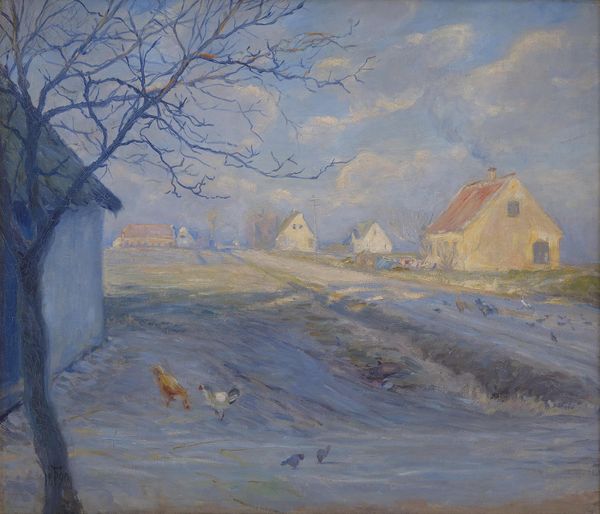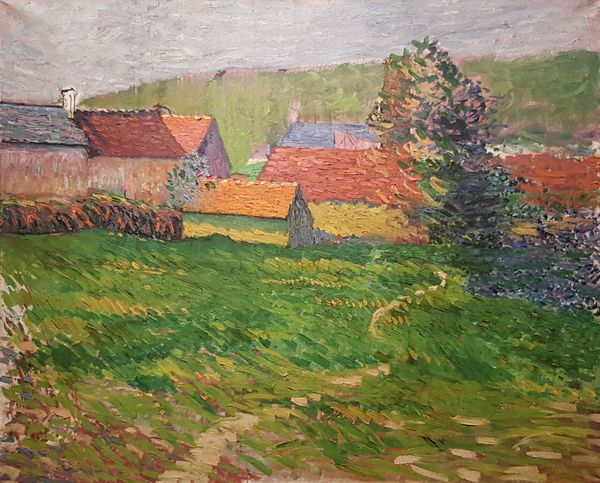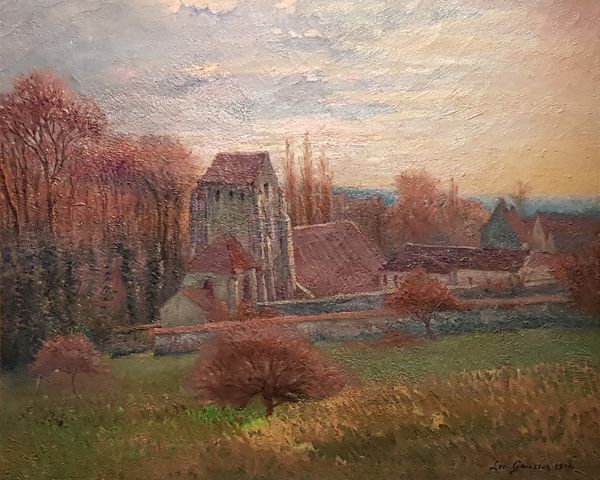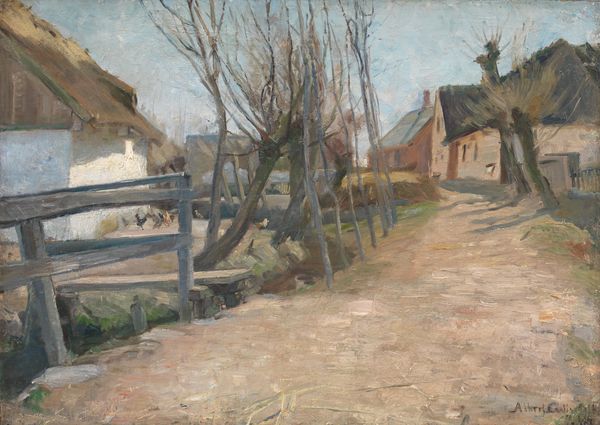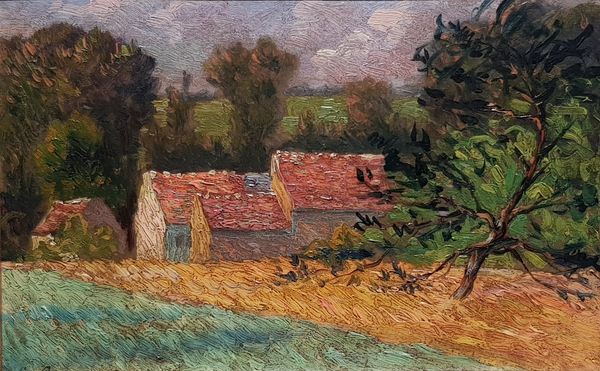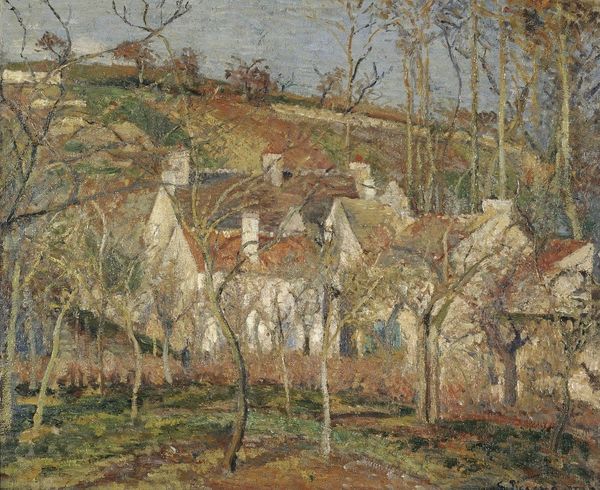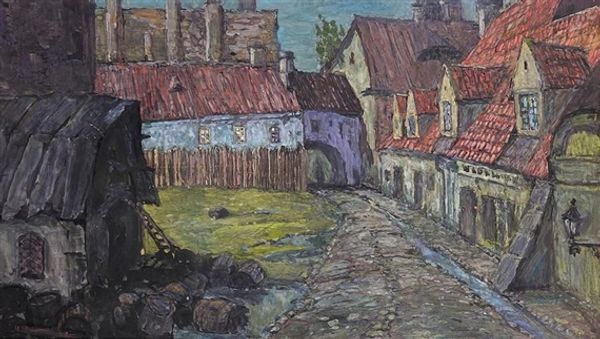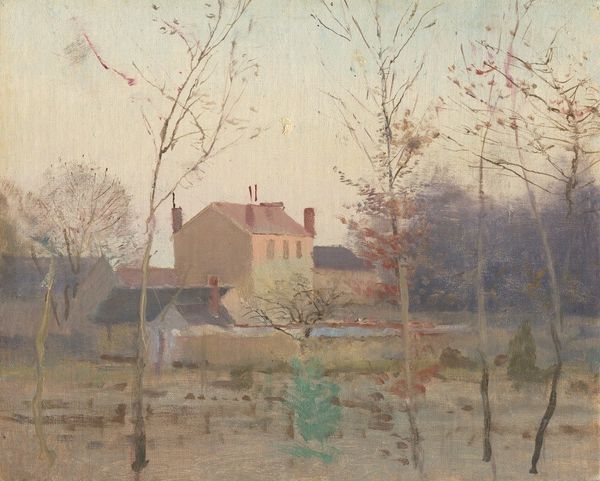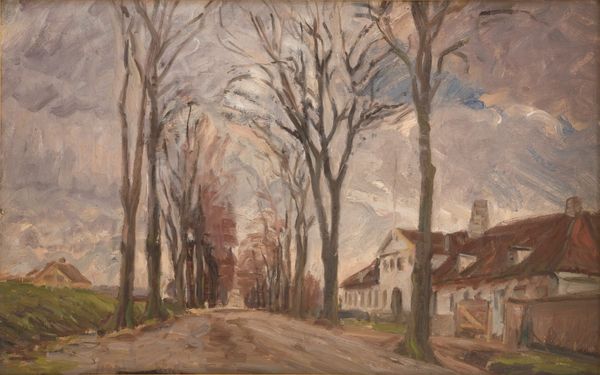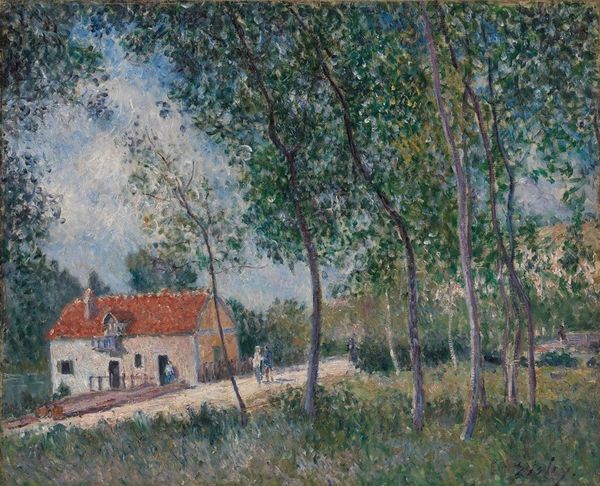
Copyright: Public domain
Editor: So, we’re looking at Léo Gausson’s “Cour de ferme,” painted in 1891. It’s an oil painting and I’m struck by the hazy light. It feels like a memory, something not quite crisp. What catches your eye? Curator: Hazy is a good word! I see that almost autumnal feeling, like a fleeting moment captured just before the colours deepen. But it’s more than just what he paints; it’s *how* he paints it. Notice how the strokes aren't trying to perfectly mimic reality? There’s an emphasis on light and feeling over strict representation. I find myself asking if he's hinting at the transient nature of rural life, how it changes with seasons, or even with industrial advancement? Editor: That's interesting, this emphasis on feeling rather than strict representation. Now that you mention it, the chickens seem less like chickens and more like…brushstrokes. How much of this do you think is intentional? Curator: Ah, the eternal artist's question. (chuckles) I think it’s both. Gausson probably wasn’t setting out to paint "symbolic chickens". Yet, by simplifying the forms and focusing on color, he invited viewers to complete the image with their own experiences. It’s like when you are at a pointillist exhibition, do you feel your eye 'mixes' color dots that never touch one another? And that process happens only in *your* mind? Editor: I see what you mean. It’s a collaboration of sorts, between the artist and the viewer. It really opens the work up to personal interpretation. Thanks! I will look at it with my 'collaborator's eye' from now on. Curator: My pleasure! Art is best viewed as a conversation, anyway! What is not told makes art speak to everyone a little differently!
Comments
No comments
Be the first to comment and join the conversation on the ultimate creative platform.

